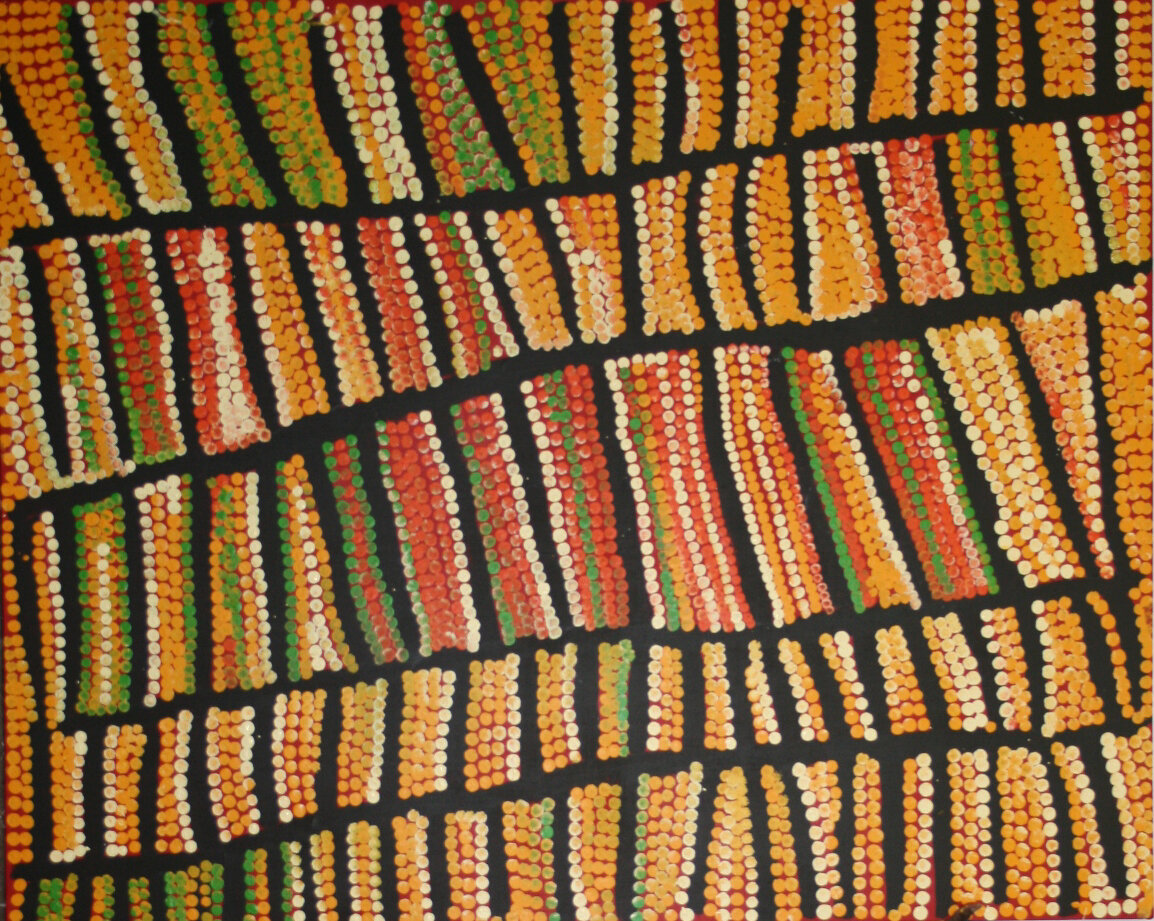Wilkinkarra, 2007 by Mitjili Napanangka Gibson 122x152cm
Wilkinkarra (Lake Mackay) and the Significance of Ngalyipi in Mitjili Napanangka Gibson’s Dreaming
Wilkinkarra, or Lake Mackay, holds deep cultural significance for Mitjili Napanangka Gibson and her family. Located on the border of the Northern Territory and Western Australia, this sacred site was central to their traditional lifestyle before assimilation policies relocated them to Yuendumu in the late 1960s.
One of the key Dreamings associated with Wilkinkarra is Ngalyipi, the snake vine ( Tinospora smilacina ), a versatile plant integral to both Pintupi and Warlpiri traditions. This green creeper, thriving around the sandhills of Lake Mackay, is valued for its practical and ceremonial uses. Split into strips, the vine’s bark is plaited into twine or rope for making sandals to protect against hot sand or sharp stones.
Ceremonially, Ngalyipi plays a crucial role in initiation rites. Its vines tie witi (ceremonial poles) to the shins of young initiates and secure yukurruyukurru (dancing boards) to performers. These ceremonies are guided by kirda(owners of the Dreaming) from the Japanangka/Japangardi and Napanangka/Napangardi groups, with Nangala/Nakamarra women and Jangala/Jakamarra men serving as custodians ( kurdungurlu ). The witi ceremony, conducted under the stars, features straight lines symbolising ceremonial poles and digging sticks in Gibson’s paintings.
Ngalyipi also has medicinal applications: its vines act as tourniquets, its leaves soothe wounds, and its extracts relieve colds and headaches. This sacred plant exemplifies the harmony between cultural practices and practical survival in Pintupi and Warlpiri traditions, as vividly depicted in Mitjili Napanangka Gibson’s artworks.

